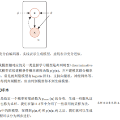Lesion synthesis received much attention with the rise of efficient generative models for augmenting training data, drawing lesion evolution scenarios, or aiding expert training. The quality and diversity of synthesized data are highly dependent on the annotated data used to train the models, which not rarely struggle to derive very different yet realistic samples from the training ones. That adds an inherent bias to lesion segmentation algorithms and limits synthesizing lesion evolution scenarios efficiently. This paper presents a method for decoupling shape and density for liver lesion synthesis, creating a framework that allows straight-forwardly driving the synthesis. We offer qualitative results that show the synthesis control by modifying shape and density individually, and quantitative results that demonstrate that embedding the density information in the generator model helps to increase lesion segmentation performance compared to using the shape solely.
翻译:随着增加培训数据、绘制损害进化假设情景或协助专家培训的高效基因化模型的兴起,热度合成工作受到极大关注,综合数据的质量和多样性高度依赖用于培训模型的附加说明的数据,这些数据并非很少难以从培训模型中获得非常不同但现实的样本,这增加了对损害分化算法的固有偏向,并限制了对损害进化设想的高效综合。本文为肝脏损害合成提供了一个脱钩形状和密度的方法,建立了一个框架,可以直接向前推动合成。我们提供了定性结果,通过逐个修改形状和密度来显示合成控制,并提供了量化结果,表明将密度信息嵌入发电机模型有助于增加损伤分化性能,而不是仅仅使用形状。









